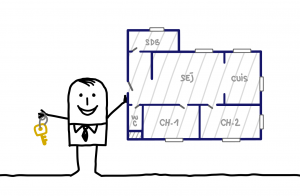
Customization in SaaS: Where to Draw the Line?
One of the core guiding principles for SaaS applications is to serve as many customers as possible from a shared multi-tenant architecture of application. The end customer benefits from this shared model because the software vendor is able to leverage economies of scale to deliver value through extensive features and workflows, high level of security and service availability, which was previously only available to fortune 100 companies. But another aspect of this democratization of off-the-shelf cloud-based solutions approach towards software is that businesses have to trade off a certain degree of flexibility when it comes to customizing the solution to their exact needs.
 Prior to SaaS, the legacy approach which companies used to follow was either to buy off-shelf on-prem solutions and then hire contractors to customize and implement it. The other approach, which bigger companies with higher budgets could afford to do, was to build software you need – inhouse. Although these approaches allowed businesses to bring out a higher degree of customization to the IT solution, but both the approaches were marred with headaches of maintaining the overheads and risk of their ambitious project evaporating into the ether of vaporware along with their projected ROIs.
Prior to SaaS, the legacy approach which companies used to follow was either to buy off-shelf on-prem solutions and then hire contractors to customize and implement it. The other approach, which bigger companies with higher budgets could afford to do, was to build software you need – inhouse. Although these approaches allowed businesses to bring out a higher degree of customization to the IT solution, but both the approaches were marred with headaches of maintaining the overheads and risk of their ambitious project evaporating into the ether of vaporware along with their projected ROIs.
So if SaaS is the best available model of software delivery, then we should better take some hard look at the intricacies and granularities of customizations and configurations that vendors can build into the product or provide through a high touch approach. Systems architecture astronauts in the SaaS space face a constant back and forth with the product teams and sales teams, to decide where do they draw the line between standardization and customization. Henry Ford said that “Any customer can have a car painted any color that he wants, so long as it is black.” But here the customers have complex and specific needs which are mission critical, business requirements are often not as simple as being ok with buying an ‘insanely great’ white colored iPhone.
 It is not only the big businesses who need high touch customizations to tailor the product to their unique needs, even the small businesses have big amount of variance in how they expect the product to be. A software vendor needs to strike a balance to provide enough customizability and configurations within the product that it doesn’t deviate too far from the core multi-tenant SaaS approach, because the last thing you want is to deal with 3-hour long support calls with your customers trying to help them troubleshoot issues with their outlier implementations which your IT teams have no idea about. So, the key is to follow a constraint theory-based approach while designing your product to restrict what can be changed and what can’t. Sticking to this customization cut-off will be hard and will even lead to some churn, but don’t budge.
It is not only the big businesses who need high touch customizations to tailor the product to their unique needs, even the small businesses have big amount of variance in how they expect the product to be. A software vendor needs to strike a balance to provide enough customizability and configurations within the product that it doesn’t deviate too far from the core multi-tenant SaaS approach, because the last thing you want is to deal with 3-hour long support calls with your customers trying to help them troubleshoot issues with their outlier implementations which your IT teams have no idea about. So, the key is to follow a constraint theory-based approach while designing your product to restrict what can be changed and what can’t. Sticking to this customization cut-off will be hard and will even lead to some churn, but don’t budge.
Some of the most common use cases require ability to add custom fields, ability to define custom workflows, customizable dashboards, custom quick filters to narrow, granular permission schemes, etc. So instead of listening to every demand of customer, focusing on these 20% feature sets of customizability which bring 80% of the value.
One of really good examples of a highly configurable product is issue tracking software Jira, built by Aussie software company Atlassian. Jira is a comprehensive software leader in the issue tracking and project management space by huge margin. The secret of the product’s success is the level of customization that it provides is simply unparalleled. Because of this, companies are using Jira for not only managing their bugs or stories (issues), but also for managing their business processes, HR departments are using it as ATS, IT teams are using it as Helpdesk software etc. Although customization of the product made it like Swiss knife of business project and workflow management software, but yet it came at the cost of simplicity, easier onboarding and technical debt. To fill out a vacuum for a simple Kanban based product at the lower level, they had to acquire Trello for north of $400 million because it posed a serious threat to Jira as it was growing at an exponential pace because of product’s inherent simplicity.
 So ability to customize a SaaS solution, shouldn’t come at the cost of simplicity of workflow. Principles of consumerization of IT applies to configuration management as well. Pulling off the customization and configurations of the product shouldn’t be rocket science for the end users, and they should be able to do it without having to hire expensive consulting firms.
So ability to customize a SaaS solution, shouldn’t come at the cost of simplicity of workflow. Principles of consumerization of IT applies to configuration management as well. Pulling off the customization and configurations of the product shouldn’t be rocket science for the end users, and they should be able to do it without having to hire expensive consulting firms.
So like all things, 100% standardization or 100% customization are extremes and most of the products lie somewhere in-between this continuum, so make sure you land up on the sweet spot to derive the benefits of shared model of SaaS at the same time satisfying the largest super set of customers’ needs.